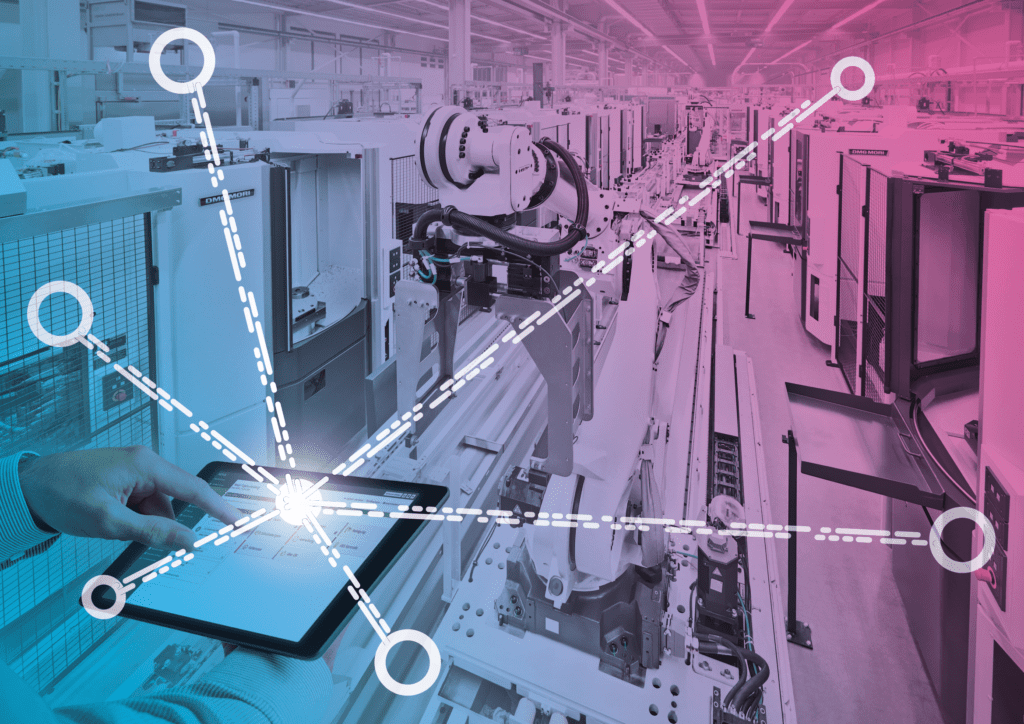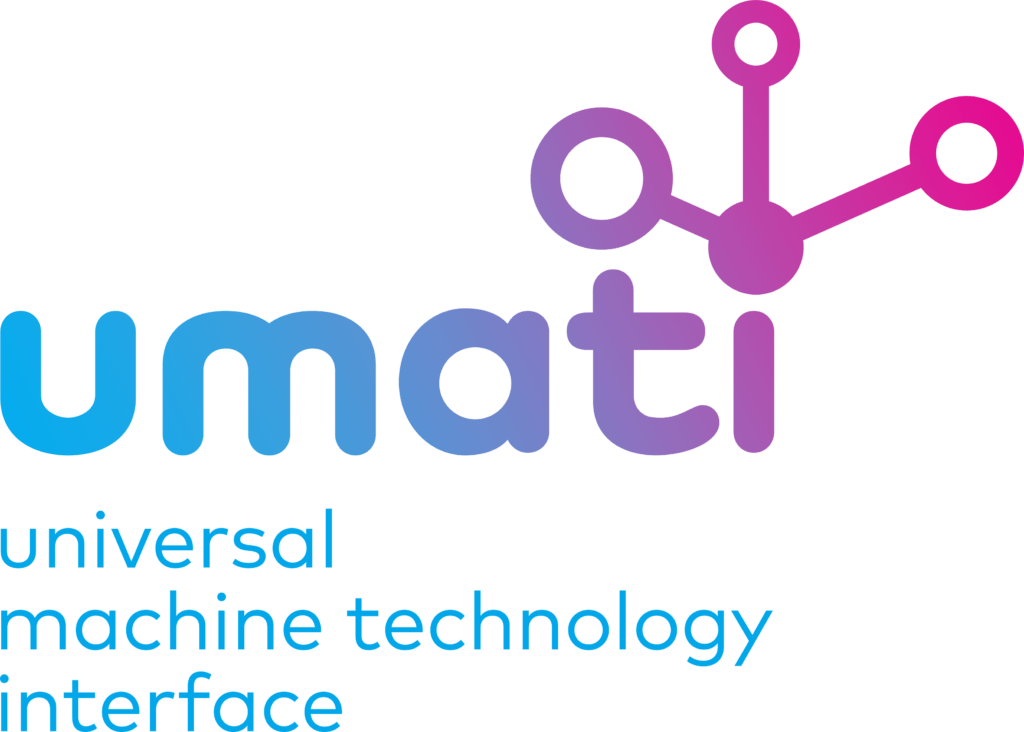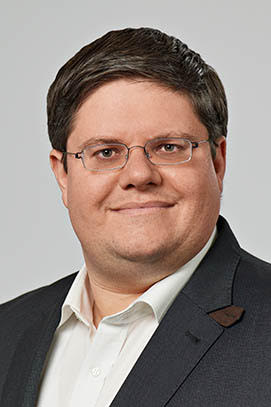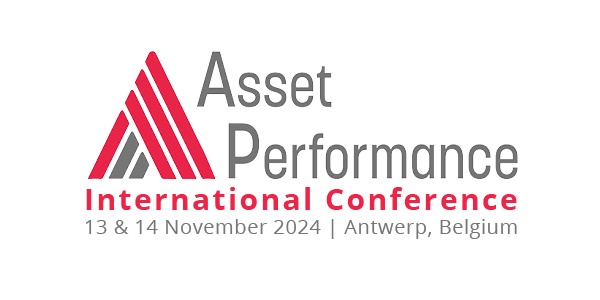umati – Building a Global Community for the Acceptance of Open Communications Standards in the Machinery Industry
In today’s high-tech world of manufacturing, the way in which machines and devices integrate and communicate with each other is increasingly complex. For this reason, it’s more important than ever to get to a stage where communication protocols and data handling between industrial machines and devices are standardised.
The major challenge is to bring open standards into application. To find out how umati is approaching this challenge, we interviewed the VDW (German Machine Tool Builders’ Association) Director of Research and Technology, Alexander Broos and have summarised the key takeaways in this article.
What follows is a fascinating insight into the rapidly changing world of industrial and manufacturing technology and how data transactions can be managed effectively in the age of Industry 4.0.
Manufacturing In Our Data-driven Economy
In the twenty-first century data is valuable. Like the gold and oil rushes of the previous centuries, businesses that get ahead of the curve in data collection and handling will thrive. Asset owners of all sizes need to take steps to optimise their data usage and improve their systems as a result.
Traditionally, big companies have collected data in their own proprietary systems. The problem is that smaller companies and startups simply don’t have the funds to build proprietary solutions. They have relied on basic off-the-shelf data management systems – standard Manufacturing Execution Systems (MES), or, in the simplest form, Excel.
But times are changing. The digitisation of our personal lives with smartphones, smartwatches, and other smart devices, is beginning to cross over into the professional and industrial spheres. Manufacturers are asking, “If I can get my health data connected to my phone app via my smartwatch, then why can’t I link up my milling machine, robot, and inspection devices to share data?” And that is the trend we’re seeing – increased data integration between industrial equipment and devices.
The Importance Of Trust
We don’t think twice about trusting Google or Apple with our phone data — because we don’t have a choice! Either we refrain from using all the promising technology options, or we have to trust that the smartphone OS giants won’t do underhand things like sell off our private health data to health insurance companies, who could then inflate costs if they discover you’re not exercising enough.
The kind of trust we see in the personal device market hasn’t transferred to the professional world just yet. There are two main reasons for that. First, there are a multitude of equipment producers, shop floor machinery makers, and tech companies that create and use different data systems. In other words, all the machinery and devices speak different languages. Second, in B2B relationships, data exchange has a very strong impact towards intellectual property. Or to put it the other way round: giving away data to freely could foster industrial espionage, disbalancing the global market.
Furthermore, the complexity of all technology within the machine building industries, its suppliers, and its customers throughout the manufacturing industries, no singular ecosystem such as Android or Apple iOS has risen up to standardise the flow of data, and it’s unlikely that itever will.
The challenge to align all of the different products and IT infrastructures is left to the stakeholders along the machinery supply chain.
In some cases, you have legacy equipment and IT systems that are 20 years old or more, running alongside cutting-edge IIoT tech. The problem is, those legacy systems took 100,000s or millions of Euros to develop, and nobody is willing to throw away that kind of investment just because a new piece of equipment cannot connect to them.
For this reason, there is a trend towards implementing open interfaces such as OPC UA, a communication framework that helps transfer signals and data between machines and digital devices. However, using these kinds of open frameworks requires high levels of trust.

Building Trust In Open Interfaces
In recent years, groups of equipment producers have taken to defining OPC UA Companion Specifications for their product technologies, creatingtheir own dictionaries. For instance, the dictionary you need for a machine tool would be different to that of a robot, or a paper-mill, or a chemical processor.
In other words, each technology groupis producing a new set of standards for their equipment. Machine users, who usually use a variety of equipment and technologies, are ending up with dozens of different standards, and each one needs to be added to their production IT.
This is where umati comes in.
umati promotes and facilitates the implementation of open, standardised interfaces based on OPC UA, built from the bottom up. The philosophy of umati is that data should be transmitted and channeled through unified implementation of these multiple standards, with everything set up in the same way. Machine makers should be able to test and prove compliance against an agreed set of standards, thus making it easier for customers to see they are getting a quality product that will integrate smoothly. This will help to build trust in the way that data is transferred and used.
The umati Community
umati stands for Universal Machine Technology Interface. At its essence, umati is a community of different parties within manufacturing and industry, including machinery and equipment makers, software producers, and their customers, that work together to promote the use of OPC UA standards across the board.
umati’s aim is to promote these standards and give machine makers the opportunity to obtain proof of functionality, unification, certification, and provide easier integration of machine communication, which benefits users. In doing so, umati acts as a quality control body for the industry.
umati aims to benefit various industrial sectors, including machine workshops, glassware makers, surface coating, basically any industry that uses industrial machinery. When a company wants to buy a machine, they can see it has umati certification and they instantly know that it will fit with their IT infrastructure, if the latter is compliant as well. In this way, umati helps to build trust and provides an incentive to both machine makers and users.
The intention is that machine integration becomes “plug and play”, similar to putting a USB into a USB socket – you just know that it’s going to work without any problems.
Data Security Is A High Priority
One example where umati paves the road is data security. This is, and always will be, a hot issue. Data must be transmitted and managed securely. Within OPC UA specifications, there already exist mechanisms to provide data security, but currently theyare not widely available implemented into commercial controller or software developer kits.
So, the machinery industry is faced with a choice. Either we can wait for the OPC UA providers to embed these security features within their products, or we can take care of it ourselves for the time being. For instance, by relying on appropriate VPN networks to cover the open ends. umati is designed to address these kind of issues.
umati also creates a feedback channel between machine makers and users. Rather than going to each machine maker or technology group individually and asking questions, the user can contact umati and say “Look, my machine tool isn’t communicating with my robot – can you help me with your expertise?”. By creating a community of experts and helping to standardise machine communication, umati is making life much easier for the end users, especially the large number of SMEs amongst them.
umati can be considered as similar to open source communities. Open source software means that there are unlikely to be backdoors which cause data leaks, as people can spot them and close them easily enough. If you buy commercial software, it’s like a black box – you don’t know what’s in there and whether there are any back doors.
In many ways, industrial companies treat data with more respect than personal tech companies like Google, Microsoft, Amazon, etc. In the personal tech sphere, if you get a free service, you pay for it with your data. In other words, if you’re not a customer, you’re the product – and they’ll sell your data on. If you don’t trust Google or Microsoft with your data, you can always use a piece of software as a barrier to protect your sensitive data. This isn’t the case in the industrial sector, as the big players such as Siemens or Mitsubishi do not have the power or scale to create a closed ecosystem like MS, Apple or Google.
In the machine industry, plant and machinery must work from day one, unlike personal software companies which can decide on a core functionality, ship a minimum viable product, then expand and develop it over time. This approach would work in manufacturing – you can’t ship a robot with minimal functionality, then say – in 2 weeks we’ll ship the gripper, then in 4 weeks, but only if a majority of users want it, we’ll ship the safety fencing!
Businesses need to be careful to protect data and put mechanisms in place to encrypt the data. It is difficult to see whether people have tampered with data at the moment. Technologies such as the blockchain may change this in the future, but right now, trust is the key factor. As umati is independent of individual suppliers, wecan help to build trust across the community and give companies peace of mind when it comes to data security.
Utilising Data Spaces
The European Commission is working on creating data spaces which are centralised places to store data that are available from anywhere, but only people with a “key” can see inside and access the data – kind of like a public locker. They are centralised in terms of availability, but decentralised in terms of access, which creates a useful safe haven for data.
umati bridges the gap between the machine maker and user, meaning that data can be safely accessed using data spaces.
Communicating Between Machinery And Devices
OPC UA defines what type of information devices, tools and machines can transmit between each other.
For instance, a robot may need to know the gripper status and position. A machine tool may need to know how many parts have been machined. A plastic machine may need to know the current temperature of the mould input and the closing pressure of the die. This is all standardised and defined in the respective OPC UA Companions Specifications, so you can look it up and see what the data means.
umati forms an umbrella of different standards. When the different standards are developed, they are done with specific use cases in mind. For example, when it comes to machine tools, the user wants to know how well the machine is performing, status monitoring, which tool is being used, which tools are in the magazine, which program is running, how many parts are produced, integration, etc., so these things will be built into the standard.
Another example could be anOPC UA standard for thermal sensors, which is under development. Thisneeds a data protocol for not only the temperature, but also calibration, operating current or voltage, storage, etc., so the sensor becomes an object or device in and of itself.
The machine builders are, in effect, system integrators. They make the machine itself, but buy third-party components or sub-systems, e.g., sensors and controllers, which gives rise to the need for information propagation. For instance, in the case of a thermal sensor, an orange light may show the user that the temperature is low, but instead of sending someone to the machine to inspect it, if there is specification in place along the propagation chain, then the user can see what is wrong from the data.
Machine Compatibility
umati helps to encourage machine compatibility by allowing two or more devices with the same OPC UA specification implemented to communicate clearly. It does this by applying user profiles. Each user profile has different protocols for data sharing and transmission than the others.
umati checks the compatibility using a testing infrastructure. The vision is to provide a decentralised testing service. If the machine or component maker is an umati member, they can use the testing service to run checks and obtain a certificate proving that the communication quality and compatibility of the OPC UA are good.
umati already has several specifications integrated, including the machine tool spec or the cross-technology OPC UA for machinery spec. The market demand is being created over time, so more and more specifications will follow as demand grows.

Discover More About Umati and Technology Standards
Dr Alexander Broos will be delivering a talk at the upcoming Asset Performance 4.0 conference, on 27 October 2021. It will cover the importance of manufacturing technology specifications and how to work together to standardise data communication through the umati community. Find out more here.

Dr. Alexander Broos, age 45, is Director of Research and Technology at VDW, the German Machine Tool Builders Association. At this position, he heads a department dealing with all technical issues concerning machine tools which stem from policy making, standardization or any other stakeholder, where a joint common position of the German machine tool industry is required. Topics include, e.g., environmental issues (energy efficiency, noise, waste and water management, EMC, etc.), safety of machinery (especially machine tools), patent monitoring, export controls. One major topic currently covers various aspects of digitization (Industrie 4.0). in this context, Dr. Broos is responsible for VDW’s Project “Machine Tools Connectivity for Industry 4.0” and the initiative “umati” (universal machine technology interface”.
In addition, Dr. Broos is General Manager of the joint research association for machine tools and manufacturing technology, VDW Forschungsinstitut. There, companies team up and work with research institutions to extend the boundaries of science with direct application to machine tools and related systems.
Dr. Broos obtained his doctorate in mechanical engineering from the wbk Institute of Production Science at the Karlsruhe Institute for Technology (KIT, Germany) after graduation with a diploma in mechanical engineering from Universität Karlsruhe (Karlsruhe, Germany). He researched at Stanford University, USA, and Universidade de Santa Catarina, Florianópolis, Brazil.
Dr. Broos is one of the Asset Performance 4.0 conference keynote speakers. Date and time of his keynote speech will be announced soon.
VDMA Verband Deutscher Maschinen- und Anlagenbau e.V., 60528 Frankfurt, 13.10.2016 (c) Team Uwe Nölke | Fotografie & Film für Menschen & Unternehmen, D-61476 Kronberg, Brunnenweg 21, T +49 6173 321413, look@team-uwe-noelke.de, www.team-uwe-noelke.de
